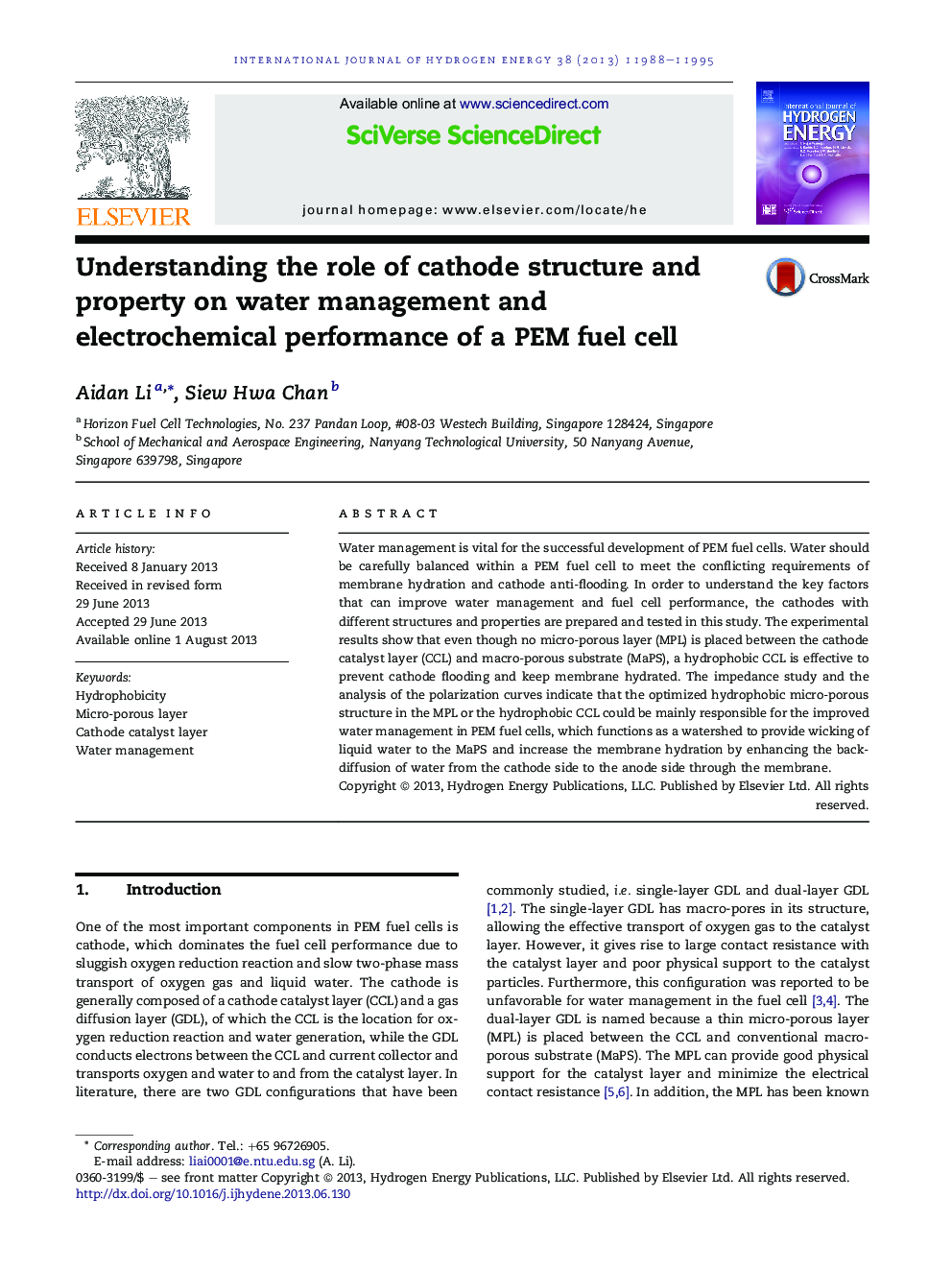| Article ID | Journal | Published Year | Pages | File Type |
|---|---|---|---|---|
| 1274917 | International Journal of Hydrogen Energy | 2013 | 8 Pages |
•We study the effect of cathode structure and property on water management.•Both MPL and hydrophobic CCL are effective to prevent the cathode flooding.•Both MPL and hydrophobic CCL can keep the membrane hydrated.•The improved water management is due to the hydrophobic micro-porous structure.
Water management is vital for the successful development of PEM fuel cells. Water should be carefully balanced within a PEM fuel cell to meet the conflicting requirements of membrane hydration and cathode anti-flooding. In order to understand the key factors that can improve water management and fuel cell performance, the cathodes with different structures and properties are prepared and tested in this study. The experimental results show that even though no micro-porous layer (MPL) is placed between the cathode catalyst layer (CCL) and macro-porous substrate (MaPS), a hydrophobic CCL is effective to prevent cathode flooding and keep membrane hydrated. The impedance study and the analysis of the polarization curves indicate that the optimized hydrophobic micro-porous structure in the MPL or the hydrophobic CCL could be mainly responsible for the improved water management in PEM fuel cells, which functions as a watershed to provide wicking of liquid water to the MaPS and increase the membrane hydration by enhancing the back-diffusion of water from the cathode side to the anode side through the membrane.
